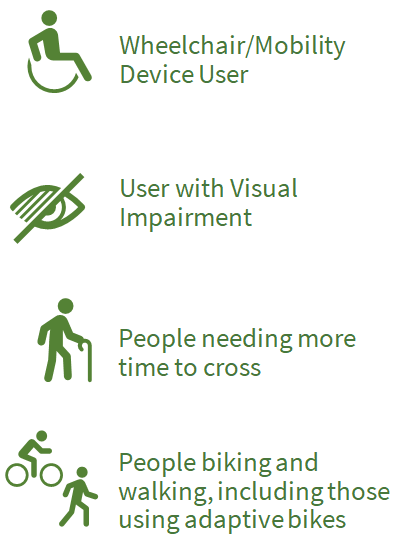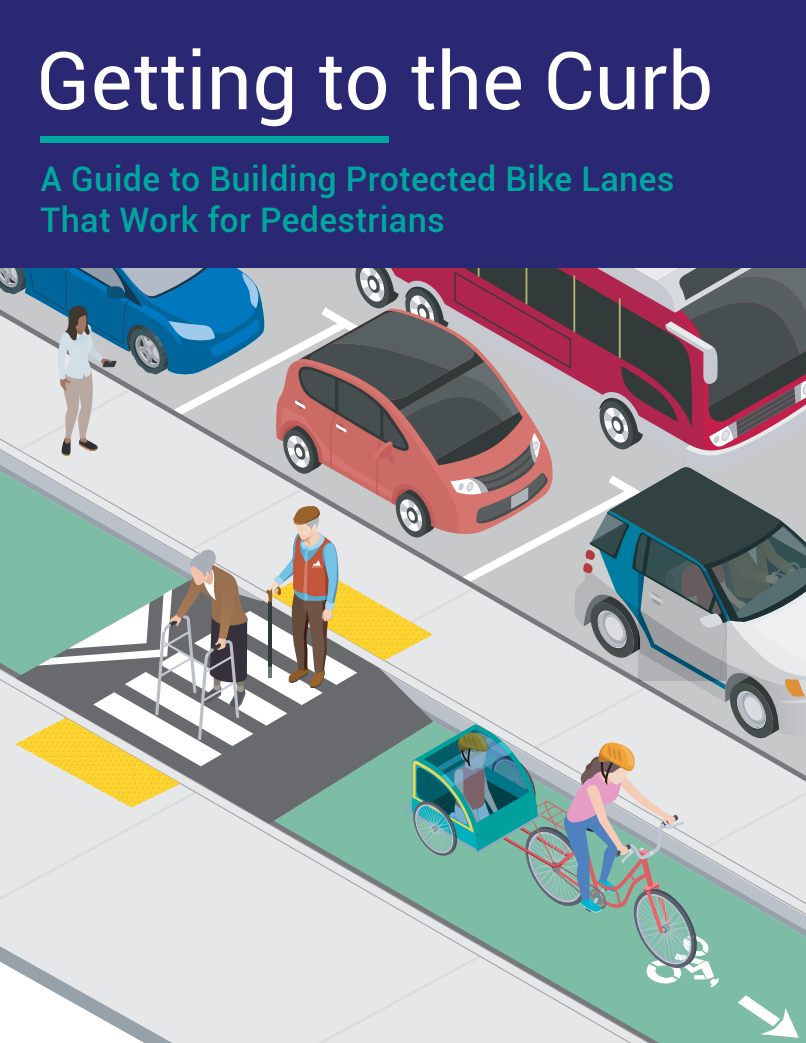Countywide Bikeways Facilities should use best practices for accessibility and universal design. Design bikeways for people bicycling of all ages and abilities (AAA), including those using adaptive bicycles. Designers should also consider and design for the needs of people with disabilities navigating near or crossing the bikeway.
Beyond Americans with Disabilities Act (ADA) compliance, designs should consider the comfort and navigation experience from the perspective of local people with disabilities, including those with visual impairments, those using wheeled mobility devices, and those debarking from transit, paratransit, or private vehicles.
The U.S. Access Board has published new guidelines under the ADA that address access to facilities within public rights-of-way. These guidelines, the Public Rights-of-Way Accessibility Guidelines (PROWAG), provide detail on application of the ADA on public streets and shared-use paths. Getting to the Curb, published by WalkSF, offers accessibility considerations for separated bike lanes and is a good example of user-focused design consideration.

Public Rights-of-Way Accessibility Guidelines
For guidance on accessibility requirements for shared-use paths, designers should refer to PROWAG, published by the U.S. Access Board. Chapter R2. Scoping Requirements and Chapter R3. Technical Requirements are the most relevant to designers for non-recreational shared use paths, which now must contain a “pedestrian access route. which is required to be accessible to and traversable by individuals with disabilities.” PROWAG guidance on pedestrian access routes includes detailed requirements on spaces that are meant to be shared with bicycles and pedestrians, to ensure they are accessible for people with disabilities. These details include:- Continuous clear width required
- Grade and cross slope
- Doors, doorways, gates, and protruding objects
- Signage
- Curb ramps and blended transitions
- Considerations for conflicts between shared use path users
PROWAG R211 & Getting to the Curb
Where parking stalls are marked or metered, PROWAG outlines guidelines for designated on-street accessible parking per block perimeter (shown below). While designated parking is not required where spaces are not marked and metered, designers should consider the overall impact of the bikeway design on parking accessibility and consider providing designated spaces even where not required. Access to businesses and key destinations should guide the placement and design of accessible spaces. Figure 19 of the FHWA Separated Bike Lane Planning and Design Guide includes design detail for accessible parking with separated bike lanes. Additional guidance from MassDOT, Chapter 5 shows alternative layouts for accessible parking at corners or mid-block locations. Designers should take a proactive approach to providing curb access with bikeway projects while meeting PROWAG guidelines. The non-profit organization Walk SF published Getting to the Curb, a guide on pedestrian and accessibility considerations for separated bike lanes, specifically those with parking-protected bike lanes. Getting to the Curb is a helpful resource to understand issues and opportunities for design that meets the needs of multiple users, including those with disabilities. Designers should coordinate with stakeholders and on interdisciplinary teams to review ADA parking designs.



